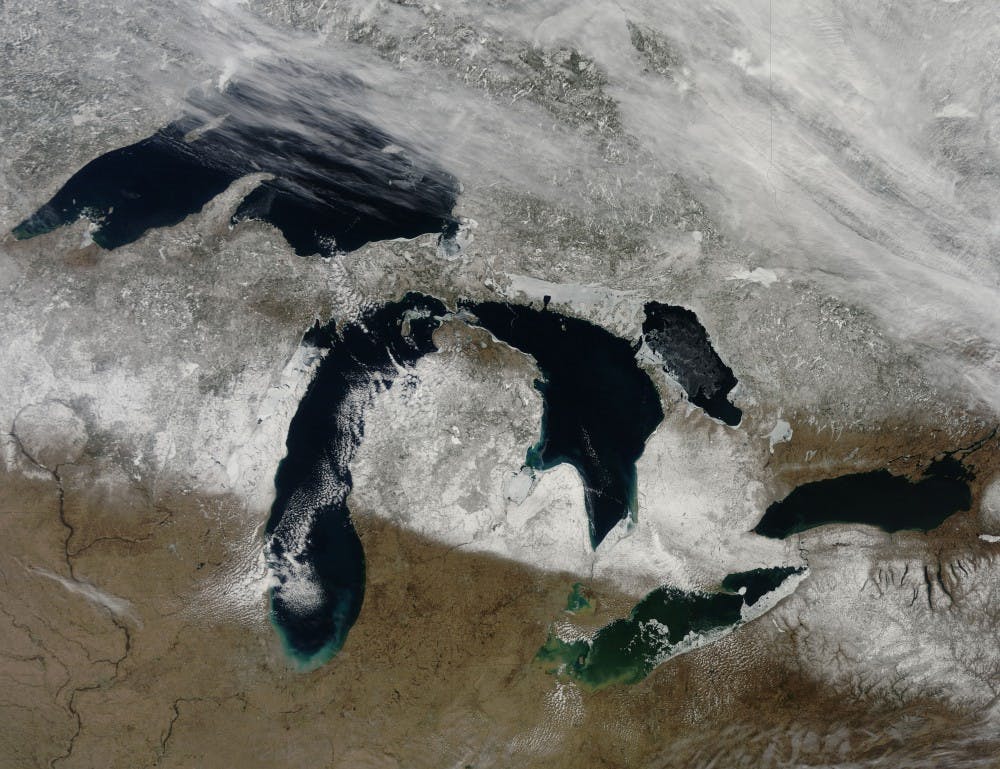Before I made the decision to pack up my life and come down to school in the soyfields of Southwest Ohio, I lived in Michigan, like so many other students here.
I love my home state. We have the largest state park and forest system in the country. We have more coastline than any other state but for Alaska. We border four of the five Great Lakes (more than anywhere else) and have over 11,000 inland lakes -- second only to, again, Alaska. In fact, Michigan holds so much water that at any point in the state, you can never be more than six miles from either a lake or the coast.
Pretty much every drop of water in Michigan, whether bubbling forth from crystal springs in the Upper Peninsula or trickling out of a manufacturing plant and into the Rouge River, eventually ends up in a Great Lake.
For a while in Michigan's history, and consequently the history of the rest of the Great Lakes region, this manufacturing trickle -- or dumping, rather -- did serious harm to the waters and the communities and ecosystems that relied on those waters.
Lake Erie, Ohio's little slice of the Great Lakes, was especially hard hit. Time magazine declared the lake a "giant cesspool" in 1969 due to primarily large amounts of untreated sewage entering the water.
To solve these longtime problems -- and to protect one of our nation's most financially, culturally and environmentally critical ecosystems -- the federal government created the Great Lakes Restoration Initiative (GRLI) in 2010. The program receives almost $300 million annually from the Environmental Protection Agency. This money goes towards cleaning up toxic incidents, combating invasive species and restoring wetlands, among other important efforts.
So here's the kicker of this long-winded introduction:
In the Trump administration's most recent budget proposal for the EPA, annual Great Lakes Restoration Initiative funding was slashed by 97 percent -- $300 million to $10 million dollars. This is the single largest dollar-amount cut out of the 42 EPA programs slated for reduction.
This is a death blow to the life of the Great Lakes.
On a directly consequential scale, this act has the potential to condemn the natural wildlife of the lakes to the dual-threat of toxic pollution and invasive species like the Asian Carp.
On a longer-term scale, this act affects the livelihoods of communities that depend on the quality and bounty of the lakes, which, due to the large amount of freshwater the Great Lakes supply to communities across the U.S., is a lot of different livelihoods.
Beyond the ecological damage likely to the region if the proposal passes, the politics of the move are befuddling. But for Wisconsin and Ohio (barely), every state in the Great Lakes region voted for Trump in the 2016 Republican primaries. The citizens in these states are often the heartland, downtrodden working men and women that Trump appealed to throughout his campaign. So many of these people -- especially in Michigan --have strong ties to these beautiful, natural lakes. Why would he strongly alienate this potentially favorable voting block further? And at the cost of a not-earth-shattering $290 million dollars? Contact your congressmen and representatives - I know I will - and let them know that these lakes and waterways are worth restoring.

